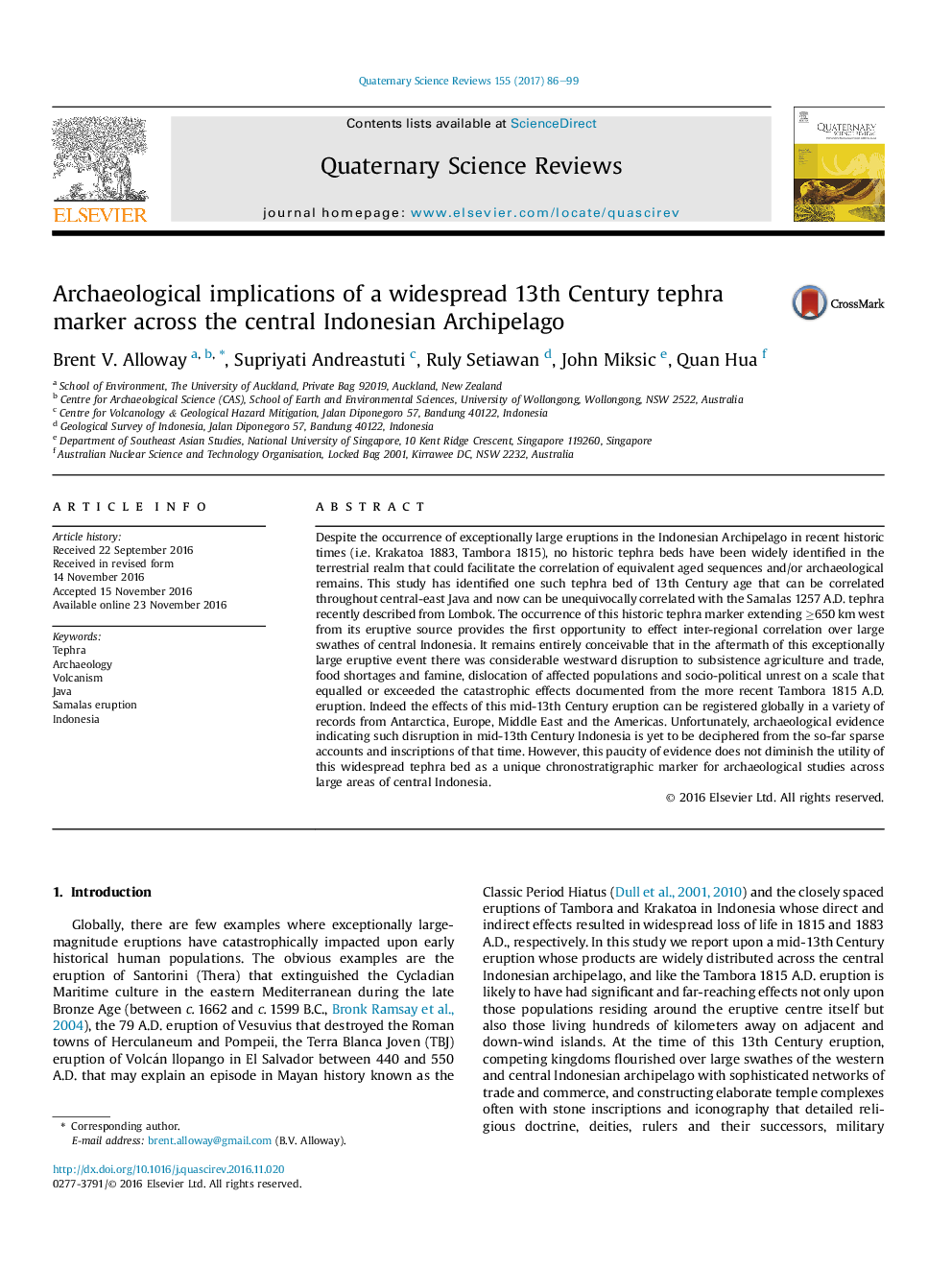| Article ID | Journal | Published Year | Pages | File Type |
|---|---|---|---|---|
| 5786841 | Quaternary Science Reviews | 2017 | 14 Pages |
â¢A widespread mid-13th Century tephra is identified across central Indonesia.â¢This tephra is correlated to the Samalas 1257 A.D. eruption sourced from Lombok.â¢This eruption is registered globally in a variety of proxy records.â¢This tephra is useful in the dating of archaeological sites and structures in Indonesia.â¢Currently, there is no evidence linking this eruption to socio-political events of that time.
Despite the occurrence of exceptionally large eruptions in the Indonesian Archipelago in recent historic times (i.e. Krakatoa 1883, Tambora 1815), no historic tephra beds have been widely identified in the terrestrial realm that could facilitate the correlation of equivalent aged sequences and/or archaeological remains. This study has identified one such tephra bed of 13th Century age that can be correlated throughout central-east Java and now can be unequivocally correlated with the Samalas 1257 A.D. tephra recently described from Lombok. The occurrence of this historic tephra marker extending â¥650 km west from its eruptive source provides the first opportunity to effect inter-regional correlation over large swathes of central Indonesia. It remains entirely conceivable that in the aftermath of this exceptionally large eruptive event there was considerable westward disruption to subsistence agriculture and trade, food shortages and famine, dislocation of affected populations and socio-political unrest on a scale that equalled or exceeded the catastrophic effects documented from the more recent Tambora 1815 A.D. eruption. Indeed the effects of this mid-13th Century eruption can be registered globally in a variety of records from Antarctica, Europe, Middle East and the Americas. Unfortunately, archaeological evidence indicating such disruption in mid-13th Century Indonesia is yet to be deciphered from the so-far sparse accounts and inscriptions of that time. However, this paucity of evidence does not diminish the utility of this widespread tephra bed as a unique chronostratigraphic marker for archaeological studies across large areas of central Indonesia.
